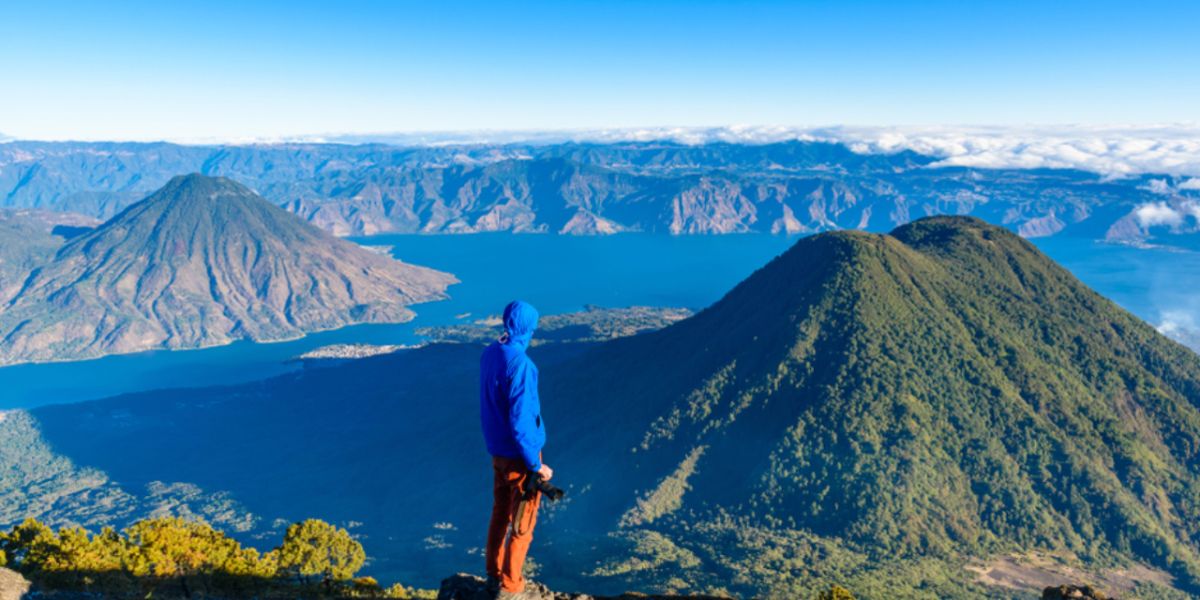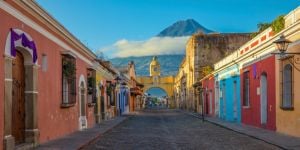
With Guatemala’s rich cultural and historic heritage, stunning landscapes and dense cultural agenda, spending your free time in front of the television should not be an option during your expatriation! There are numerous ways to spend your leisure time in Guatemala.
Natural wonders in Guatemala
Guatemala boasts stunning volcanic landscapes providing amazing sights. In particular, Lake Atitlan, surrounded by three active volcanoes (Atitlan, Toliman and San Pedro), is considered as one of the most beautiful in the world; it is also renowned as the deepest lake in the Central American region.
The country also offers plenty of outdoor leisure and entertainment. You can for example learn everything about the history, culture and roasting process of coffee on the occasion of a tour of local coffee plantations.
Besides, the country's natural endowments make it a perfect spot for outdoor sports lovers. Among the most popular are rafting in the vicinity of volcano Acatenango, mountain climbing and hiking around Antigua, or caving under the Petén plateau. The Caribbean coast is particularly suitable for water sports and you will find many opportunities of snorkelling, scuba diving, and surfing, particularly in Playa de Escobar.
The country also has several large natural and entertainment parks.
Culture and heritage of Guatemala
Guatemala is above all marked by its Mayan heritage, with native arts and crafts pervading the country's cultural and historical background.
The ruins of Tikal (inscribed on the World Heritage List), Zacaleu and Quiriguá are a few of the country's many noteworthy Mayan archaeological sites.
Besides, the Mayan cultural influence lives on through a number of traditional celebrations and rites, most of which revolve around dances and music, still performed to this day. These traditions are particularly vivid in rural villages home to indigenous populations, such as the town of Chichicastenango, renowned for its weekly artisan market showcasing local craftsmanship, like the famous colourful handwoven textiles, ceramics or beaded jewellery.
The colonial era has also left its mark on the country, primarily embodied in buildings of baroque architectural style or Roman Catholic churches. The old colonial capital, Antigua Guatemala (also on the World Heritage list), boasts a plethora of such colourful buildings, picturesque churches and ruins interspersed with cobblestone streets. Of late, Antigua has been revived and redeveloped, and the emergence of a number of cultural or touristic facilities (museums, bookshops, language schools, craft shops, etc.) make it a favourite of expats and tourists alike. The city is also a hub for coffee and chocolate makers.
The country's flagship cultural institutions, concentrated in Guatemala City, include the National Museum of Archaeology and Ethnology, the Museum of Arts and Popular Crafts, the Museum of Modern and Contemporary Arts, the Ixchel Museum of Indian Attire, the National Theatre, and the Conservatory of Music.
Guatemala has nurtured a few recognised modern artists, such as writers Miguel ángel Asturias (Nobel Prize winner for Literature in 1967), or Rigoberta Menchú, who is also famous for its activities as an Indian-rights activist, and painter Carlos Mérida.
Good to know:
Feel free to try and negotiate the price of items within the traditional crafts markets.
Festivals in Guatemala
Extremely popular fairs and religious festivals take place everywhere in the country throughout the year.
Such highlights are usually celebrated with fireworks, traditional dances, parades, football matches, horse races and cockfights, or kite-flying.
Useful links:
We do our best to provide accurate and up to date information. However, if you have noticed any inaccuracies in this article, please let us know in the comments section below.








